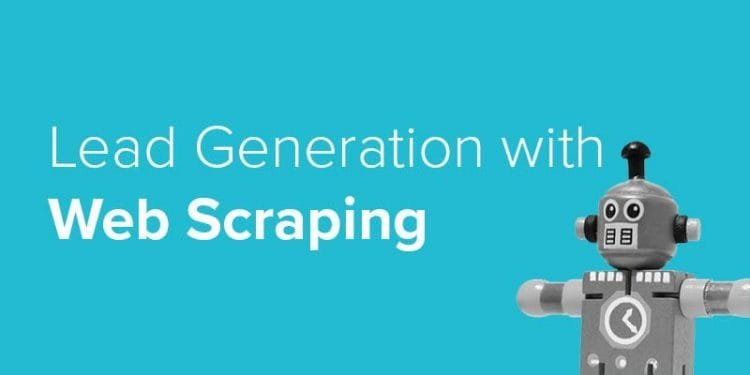Businesses have always been interested in extracting data from the internet for marketing purposes and generating new leads. However, until recently, this was only possible through expensive and lengthy methods like manual data collecting. But with the advent of web scraping tools, businesses can gather data quickly and easily. Acquiring new leads is time-consuming and a painful process; nonetheless, if done the right way, it brings a massive boost to business sales.
Today, the internet has made generating new leads hard and easy at the same time. It’s easier since there are more ways to acquire contacts through social media platforms and more complex because of the many sources and tough competition. In this guide, we discuss web scraping for lead generation.
What Is Web Scraping for Lead Generation?
Web scraping is the process of extracting data from web pages. You can use scrapers to crawl through the target websites and extract the required content. Once the crawlers gather the data, they organize it in a structured format that you can analyze immediately. However, you need to pair your bots with proxies such as those from IPRoyal to get quality leads. With a proxy server, you can hide your IP address and access the information you need from any part of the world. Moreover, with proxies, you can avoid IP blockages and anti-scraping bans and gather data efficiently and faster. For better results, opt for residential proxies and bot traffic will appear as if from an actual user.
What Data to Gather to Create Leads
When gathering data for lead generation, there are a few key things to keep in mind. First, you want to target audiences likely to be interested in your product or service. Second, you need to gather accurate and up-to-date information. And finally, the data should be formatted in a way that makes it easy to use.
Some of the best data to gather for lead generation includes:
- Contact information (e.g., email addresses, phone numbers, etc.)
- Demographic information (e.g., age, gender, location, etc.)
- Interests and hobbies
- Spending habits
Once you have this information, you can generate leads by reaching out to potential customers and promoting your products or services.
Step-By-Step Guide for Lead Generation With Web Scraping
Generating leads is a must for any business that wants to succeed. And while there are several ways to generate leads, web scraping can be highly effective. Below is a guide on how to scrape the web for lead generation.
1. Identify the target audience
Before you embark on data extraction for lead generation, you need to identify your target audience. Now, let’s assume you already have the persona of your target audience; where can you get their contact details, which websites they visit, and the social media platform they use most? Create a list with all the sources that could provide you with the required details. This way, you can speed up your search and ensure you don’t receive irrelevant data from your scraping tool.
2. Find the correct data
Once you know your target audience, you need to find the data that will allow you to reach them. This information can be gathered from various sources, but web scraping is often the quickest and easiest way to get it.
3. Scrape the data
The next step is to scrape the data you need from the internet. Various web scraping tools are available, so choose one that fits your needs and budget. Additionally, be aware of pitfalls like honey pots and IP blocks. Once you have the data, you need to format it in a way that makes it easy to use. You can use a spreadsheet or other software to format your data.
4. Reach out to potential customers
The final step is to reach out to potential customers from your lead generation campaign via email, phone calls, or other methods. Give your leads a compelling proposition they can’t resist. If your offer is not attractive enough, your efforts to gather data will go waste.
Conclusion
Web scraping is a quick and easy way to gather the data you need for lead generation. And with the right tools, it can be an extremely effective way to target specific audiences and generate more sales for your business. By formatting your data to make it easy to use, you can streamline the lead gen process and improve your chances of success.

















































